Plenary speakers
Xiang Zhang
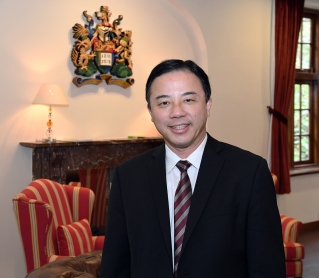 Professor Xiang Zhang is the 16th President and Vice-Chancellor of the University of Hong Kong (HKU). Before joining HKU, he is the inaugural
Ernest S. Kuh Endowed Chair Professor at UC Berkeley and the Director of Nano-scale Science and Engineering Center (SINAM). He also served as the
Director of Materials Science Division at Lawrence Berkeley National Laboratory (LBNL).
Professor Xiang Zhang is the 16th President and Vice-Chancellor of the University of Hong Kong (HKU). Before joining HKU, he is the inaugural
Ernest S. Kuh Endowed Chair Professor at UC Berkeley and the Director of Nano-scale Science and Engineering Center (SINAM). He also served as the
Director of Materials Science Division at Lawrence Berkeley National Laboratory (LBNL). Professor Zhang is an elected member of US National Academy of Engineering (NAE), Academia Sinica, foreign member of Chinese Academy of Sciences, and Fellow of four scientific societies: APS (The American Physical Society), OSA (The Optical Society of America), AAAS (The American Association for the Advancement of Science), and SPIE (The International Society of Optical Engineering).
Professor Zhang received PhD from UC Berkeley (1996) and MS from University of Minnesota and MS/BS from Nanjing University, China. He was an assistant professor at Pennsylvania State University (1996-1999), and associate professor and full professor at UCLA (1999-2004) prior to joining Berkeley faculty in 2004.
Professor Zhang’s current research focuses on materials physics, metamaterials and nano-photonics. He has published over 320 journal papers including 70 publications in Science and Nature family series. He has given over 320 Keynote, Plenary and Invited talks at international conferences and institutions. He served as a Co-Chair of NSF Nanoscale Science and Engineering Annual Grantee Conferences in 2004 and 2005, and past Chair of Academic Advisory Board for Research Center for Applied Science (RCAS), Academia Sinica.
Please refer to Xiang Zhang .
Lionel M. Ni
 Prof. Lionel M. Ni has assumed office as the Vice Rector (Academic Affairs) of the University of Macau from January 2015. A world-renowned computer scientist,
he is also Chair Professor in the Department of Computer and Information Science. Prior to coming to the University of Macau, he was Chair Professor in the
Computer Science and Engineering Department at the Hong Kong University of Science and Technology (HKUST). At HKUST, he served as Department Head (2002 to 2008),
Special Assistant to the President (2010 to 2014), Dean of Fok Ying Tung Graduate School (2011 to 2014), and Director of HKUST China Ministry of
Education/Microsoft Research Asia IT Key Lab (2004 to 2014). Before coming to HKUST, Professor Ni was a full Professor in Computer Science and Engineering
at Michigan State University where he had stayed from 1981 to 2002. He was co-founder and CEO of CC&T Technologies, Inc., Michigan (1998 to 2001) and the
program director of the U.S. National Science Foundation Microelectronic Systems Architecture Program (1995 to 1996).
Prof. Lionel M. Ni has assumed office as the Vice Rector (Academic Affairs) of the University of Macau from January 2015. A world-renowned computer scientist,
he is also Chair Professor in the Department of Computer and Information Science. Prior to coming to the University of Macau, he was Chair Professor in the
Computer Science and Engineering Department at the Hong Kong University of Science and Technology (HKUST). At HKUST, he served as Department Head (2002 to 2008),
Special Assistant to the President (2010 to 2014), Dean of Fok Ying Tung Graduate School (2011 to 2014), and Director of HKUST China Ministry of
Education/Microsoft Research Asia IT Key Lab (2004 to 2014). Before coming to HKUST, Professor Ni was a full Professor in Computer Science and Engineering
at Michigan State University where he had stayed from 1981 to 2002. He was co-founder and CEO of CC&T Technologies, Inc., Michigan (1998 to 2001) and the
program director of the U.S. National Science Foundation Microelectronic Systems Architecture Program (1995 to 1996). Prof. Ni earned the PhD degree in electrical and computer engineering from Purdue University, West Lafayette, IN, in 1980. He has directed 54 PhD students to completion and has published many high quality papers in the areas of pervasive computing, mobile computing, big data, sensor networks, parallel architectures, distributed systems, high-speed networks, VLSI design automation, and parallel processing. He co-authored (with Jose Duato and Sudhakar Yalamanchili) the book “Interconnection Networks: An Engineering Approach” in 1997 by IEEE Computer Society Press. The second edition of this book was published by Morgan Kaufmann in 2002. His second book “Smart Phone and Next Generation Mobile Computing” (with Pei Zheng) was published in 2006 also by Morgan Kaufmann. His third book “Professional Microsoft Smartphone Programming” (with Baijian Yang and Pei Zheng) was published by Wrox in 2007. Most of Prof. Ni’s research papers were published in prestigious venues and his research papers have been highly cited for over 28,000 times according to Google Scholar with H-index 75. He is the owner of 8 US/China patents with more than 18 patents pending.
Please refer to Lionel M. Ni .
Enge Wang
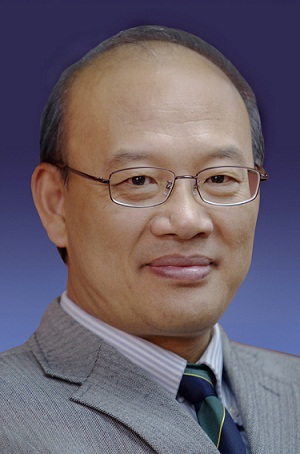 Enge Wang graduated in theoretical physics from Liaoning University (1982) and obtained his PhD in condensed matter physics from Peking University (1990).
He did his research in Princeton through an exchange program and worked at Institut d’Electronique, de Microelectronique et de Nanotechnologie (France)
and University of Houston as a post-doctoral fellow and a research scientist. He started his academic career in 1995 as a professor at Institute of Physics,
Chinese Academy of Sciences (CAS). He was the Director of the Institute of Physics (CAS) (1999-2007), the Founding Director of International Center for
Quantum Structures (2000-2001), the Co-Director of Beijing National Laboratory for Condensed Matter Physics (2004-2009), the Executive President of CAS
Graduate University (2008-2009), the Deputy General Secretary of CAS (2008-2009), and the Dean of School of Physics, the Dean of Graduate School, the Provost
and Executive Vice President (2009-2012), the President (2013-2015) of Peking University. Since 2015 (March), he is the Deputy President of Chinese Academy of
Sciences. He is also the Vice President of the Chinese Physical Society (CPS, 2012-2015).
Enge Wang graduated in theoretical physics from Liaoning University (1982) and obtained his PhD in condensed matter physics from Peking University (1990).
He did his research in Princeton through an exchange program and worked at Institut d’Electronique, de Microelectronique et de Nanotechnologie (France)
and University of Houston as a post-doctoral fellow and a research scientist. He started his academic career in 1995 as a professor at Institute of Physics,
Chinese Academy of Sciences (CAS). He was the Director of the Institute of Physics (CAS) (1999-2007), the Founding Director of International Center for
Quantum Structures (2000-2001), the Co-Director of Beijing National Laboratory for Condensed Matter Physics (2004-2009), the Executive President of CAS
Graduate University (2008-2009), the Deputy General Secretary of CAS (2008-2009), and the Dean of School of Physics, the Dean of Graduate School, the Provost
and Executive Vice President (2009-2012), the President (2013-2015) of Peking University. Since 2015 (March), he is the Deputy President of Chinese Academy of
Sciences. He is also the Vice President of the Chinese Physical Society (CPS, 2012-2015). Enge Wang was also a JSPS professor of Tohoku University (Japan, 2001-2002), an AvH Scholar of Fritz-Haber Institute der MPG (Germany, 2005-2009), a GCEP Professor of Department of Applied Physics, Stanford University (2008-2009), and a KITP visiting Professor, University of California at Santa Barbara (2009). He is a member of the Chinese Academy of Sciences (CAS, 2007) and the Academy of Sciences for the Developing World (TWAS, 2008), as well as a Fellow of the American Physical Society (APS, 2006) and a Fellow (FinstP) of the Institute of Physics (UK, 2003).
Enge Wang researches surface physics; the approach is a combination of atomistic simulation of nonequilibrium growth and chemical vapor deposition of light-element nanomaterials. This study primarily involves formation and decay mechanisms of surface-based novel structures. Recently, he also researches water behaviors in confinement system. In the above areas, he is the author of over 320 papers in peer-reviewed journals (4 in Science, 13 in Natures, 2 in PNAS, 23 in PRL, 7 JACS, 45 in APL, 8 in Nano Lett, and 9 invited review articles) and 2 books, coeditor of 1 MRS proceeding, and coinventor on 13 patents. He delivered over 80 plenary/keynote/invited talks including APS, ACS, MRS, and IUMRS, and gave over 100 seminars/colloquiums worldwide, including Harvard, Stanford, Berkeley, Columbia, Oxford, Cambridge, Tokyo, Kyoto, Peking and Tsinghua University. He is an ISI highly cited researcher in physics with over 9000 citations (with H-index of 55 including 16 of his papers cited over a hundred times each).
Enge Wang was named a number of international and national academic awards, including Tan Kah Kee Science Award in Mathematics and Physics (2014), the Asian Consortium on Computational Materials Science (ACCMS) Award (Singapore, 2011), the 2nd Place of the National Science and Technology Award (2004 and 2011), the first Ten Outstanding Scientist Award in China (2010), the HLHL Science and Technology Award (2010), the GCEP Scholar (Stanford, 2009), the Distinguished Chinese Visiting Scholar (Hong Kong PolyU, 2008), the Distinguished Lecturer (Australian Research Council Nanotechnology Network, 2007), the TWAS Award in Physics (2005), the Humboldt Research Award (2005), Zhou Pei-Yuan Physics Award (Chinese Physics Society, 2005), the Outstanding Science and Technology Achievement Prize (CAS, 2005), the IBM Faculty Award (2003), the Achievement in Asia Award (AAA) of the Overseas Chinese Physics Association (2003), the 1st Place of the Science and Technology Award of Beijing (2003 and 2008), Youth Scientist Award (CAS, 1997), Distinguished Young Research Award (Hong Kong Qiu Shi Science Foundation, 1996), Outstanding Young Research Foundation (NSFC, 1995) and 100 Talent Programme Scientist (CAS, 1994) etc.
Please refer to Enge Wang .
Wenlong Zhan
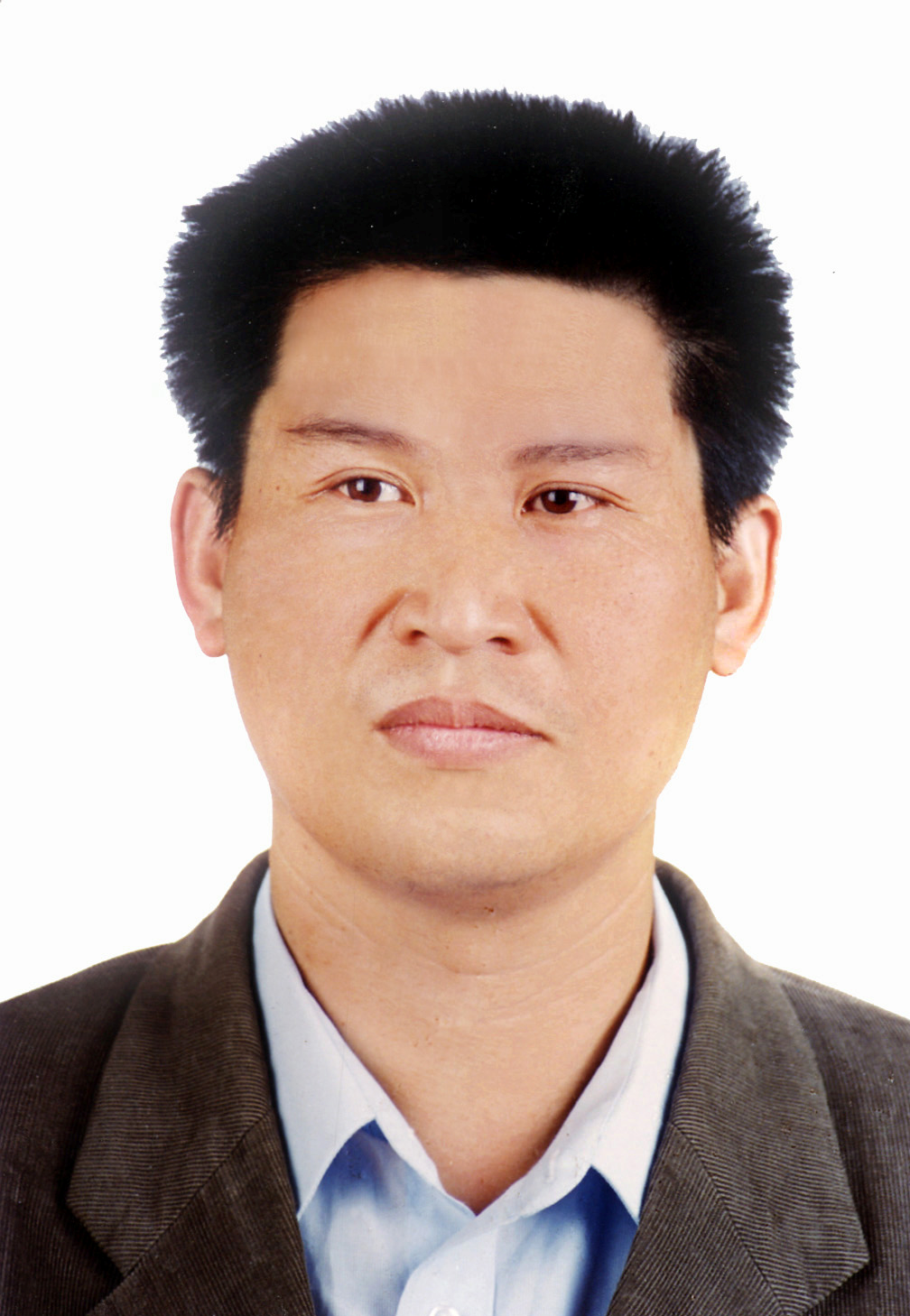 詹文龙,毕业于兰州大学现代物理系,中国科学院近代物理研究所研究员。1999年至2008年任中科院近代物理研究所所长,2008年至2016年任中国科学院副院长、党组成员。
2005年当选中国科学院数理学部院士,2011年当选为中国物理学会理事长。历任中共十五、十六大代表,中共第十七届,第十八届中央候补委员,十三届全国人大代表,
十三届全国人民代表大会社会建设委员会委员。
詹文龙,毕业于兰州大学现代物理系,中国科学院近代物理研究所研究员。1999年至2008年任中科院近代物理研究所所长,2008年至2016年任中国科学院副院长、党组成员。
2005年当选中国科学院数理学部院士,2011年当选为中国物理学会理事长。历任中共十五、十六大代表,中共第十七届,第十八届中央候补委员,十三届全国人大代表,
十三届全国人民代表大会社会建设委员会委员。詹文龙院士长期从事核物理研究,80年代中期进入中能重离子核物理研究,主要参加放射性束物理的早期实验,建立具有特色的放射性束流分离装置,开展新核素合成和奇异原子核结构研究; 90年代开始相对论重离子碰撞研究;90年代后期负责进行国家大科学工程“兰州重离子加速器冷却储存环”的研制。
詹文龙院士为我国核物理基础研究做出了重要贡献,主要包括:在放射性束物理研究中发现了11种新核素,首次测量30多种核素的质量; 成功地研制出美国相对论重离子对撞机上PHENIX实验探测器的高性能飞行时间探测器的样机;研制成具有20世纪90年代国际先进水平的兰州放射性束流线,在此束流线上确定了一批丰质子晕核, 促进了中国的放射性束物理实验研究的发展;领导国家九五重大科学工程—兰州重离子加速器冷却储存环国家重大科学工程研制;领导核质量测量和重离子治癌等早期研究工作。
詹文龙院士目前任国家“十二五”重大科技基础设施“强流重离子加速器”和“加速器驱动嬗变研究装置”工程总指挥,领导我国加速器驱动先进核能系统研究工作。
Please refer to Wenlong Zhan .
Zikang Tang
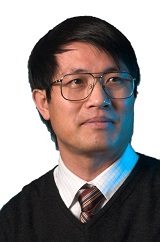 汤子康,1983年毕业于浙江大学,1986年中国科学院长春光机物理所获得硕士学位,1987年赴日本东北大学深造,1992年获博士学位。1992-1994年,
在日本理化学研究所任基础科学特别研究员,开始从事纳米材料和物理的研究。1994-2015年受聘香港科技大学物理系,相继任职助理教授、副教授及教授。2005年,
创建香港科技大学“纳米科学与技术硕士/博士学位课程”并兼任学位课程主任。2016年1月受聘澳门大学讲座教授至今。在澳门大学开始创建应用物理与材料工程研究所,任创所所长。
2016年创建了澳门物理学会,任创会会长。
汤子康,1983年毕业于浙江大学,1986年中国科学院长春光机物理所获得硕士学位,1987年赴日本东北大学深造,1992年获博士学位。1992-1994年,
在日本理化学研究所任基础科学特别研究员,开始从事纳米材料和物理的研究。1994-2015年受聘香港科技大学物理系,相继任职助理教授、副教授及教授。2005年,
创建香港科技大学“纳米科学与技术硕士/博士学位课程”并兼任学位课程主任。2016年1月受聘澳门大学讲座教授至今。在澳门大学开始创建应用物理与材料工程研究所,任创所所长。
2016年创建了澳门物理学会,任创会会长。1998年,他从纳米结构的ZnO薄晶体膜中发现室温下的紫外激光发色现象。这一发现触发了全球范围的氧化锌研究热潮。他1998年发表在美国的《应用物理通讯》 有关氧化锌室温紫外受激发射的研究论文受到了业内的极大关注,迄今论文已经被引用了2700余次。2012年,该论文被《应用物理通讯》创刊五十周年纪念刊入选为过去50年 刊登在该期刊的50篇最高引用率最高的论文之一。这项工作于2003年获得国家自然科学奖。
2000年,汤教授开发出了独特的模板技术,并制造出直径仅为0.4nm的单壁碳管,创了世界最小单壁碳管的纪录。这些超细单壁碳管在沸石单晶的纳米细孔中严格地以晶格周期排列,因而能对这些超细纳米碳管进行一系列热、光、电、磁等物理特性的深入研究。2001年,汤教授在这些非超导元素纯碳结构的超细纳米碳管中发现了奇异的超导现象。有关超细纳米碳管的一系列研究工作再次引起世界范围的关注:2000年被485位两院院士入选为2000年度十大“世界科学新闻”之一,以及被美国著名的《化学与工程新闻》期刊入选为纳米材料领域最重要的四项重要年度成果之一,2001年,并被英国物理研究所(IOP)网站(http://physicsworld.com)入选为物理学领域11项最重要的研究成果之一。
汤教授是国家杰出青年基金获得者,“长江奖励计划”讲座教授,以及首批“国家千人计划”教授。汤教授的科研成果累累,在国际学术期刊上发表300余篇论文,h-index 47,论文被引用总数13600余次。
Please refer to Zikang Tang .
Xin-Cheng Xie
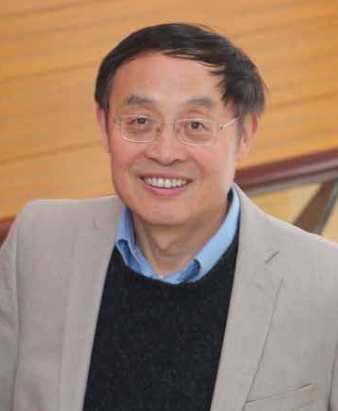 Professor Xin-Cheng Xie obtained his B.Sc. in Physics from the University of Science and Technology of China in 1982 and Ph.D.
from the University of Maryland in 1988. He became a faculty member in the Department of Physics at Oklahoma State University
in USA in 1991 and was named Regents Professor in 2004. He worked as Chief Scientist and Director of Laboratory of Condensed Matter
Theory and Computation at the Institute of Physics, Chinese Academy of Sciences from 2005 to 2010. Professor Xie joined Peking University
in 2010 as Chair Professor and Founding Director of International Center for Quantum Materials. In 2011 he was appointed as the Dean of the
School of Physics at Peking University. Professor Xie assumed the role of Divisional Director of Mathematical and Physical Sciences,
National Natural Science Foundation of China (NSFC) in 2016, and Vice President of NSFC in 2018.
Professor Xin-Cheng Xie obtained his B.Sc. in Physics from the University of Science and Technology of China in 1982 and Ph.D.
from the University of Maryland in 1988. He became a faculty member in the Department of Physics at Oklahoma State University
in USA in 1991 and was named Regents Professor in 2004. He worked as Chief Scientist and Director of Laboratory of Condensed Matter
Theory and Computation at the Institute of Physics, Chinese Academy of Sciences from 2005 to 2010. Professor Xie joined Peking University
in 2010 as Chair Professor and Founding Director of International Center for Quantum Materials. In 2011 he was appointed as the Dean of the
School of Physics at Peking University. Professor Xie assumed the role of Divisional Director of Mathematical and Physical Sciences,
National Natural Science Foundation of China (NSFC) in 2016, and Vice President of NSFC in 2018. Professor Xie’s main research interests include quantum Hall effect, quantum transport, topological matter and strongly correlated electron systems. He has authored over 200 scholarly articles, including 37 in Physical Review Letters and over 100 in other Physical Review journals. He has delivered more than 190 invited talks at universities and conferences worldwide. He is an editorial board member of several international peer-reviewed journals, such as a Divisional Associate Editor for Condensed Matter Division of Physical Review Letters (PRL) and the Editor-in-Chief of Science China Physics, Mechanics & Astronomy. He also serves on the international advisory committees of many international conferences and institutes. Professor Xie was elected as a Fellow of American Physical Society in 2008, a Member of Chinese Academy of Sciences in 2015 and a Fellow of The World Academy of Sciences in 2018.
Please refer to Xin-Cheng Xie .
Dapeng Yu
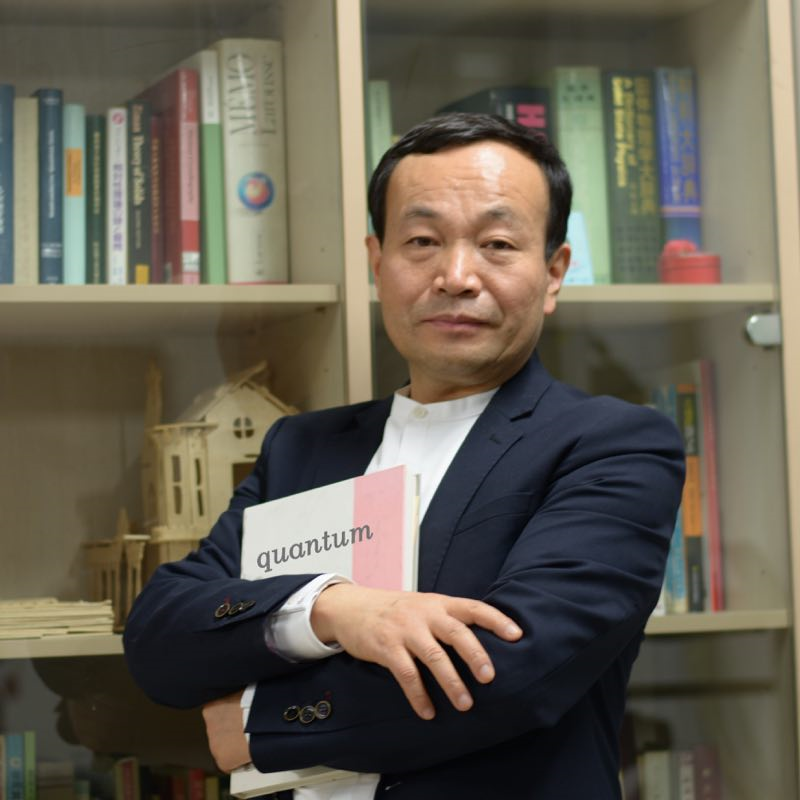 俞大鹏,法国南巴黎大学固体物理实验室博士;原北京大学物理学院教授;2016年6月加入南方科技大学,担任物理系讲座教授。2000年获得国家杰出青年科学基金;
2002年获得教育部“长江学者”特聘教授;2005年获得教育部长江学者与创新团队计划--“准一维纳米结构与低维物理”项目支持;2015年当选为中国科学院技术学部院士。
2016年荣获深圳高层次专业人才称号。2017年被评为广东省“珠江人才计划”引进创新创业团队(量子科学与工程团队)带头人。
俞大鹏,法国南巴黎大学固体物理实验室博士;原北京大学物理学院教授;2016年6月加入南方科技大学,担任物理系讲座教授。2000年获得国家杰出青年科学基金;
2002年获得教育部“长江学者”特聘教授;2005年获得教育部长江学者与创新团队计划--“准一维纳米结构与低维物理”项目支持;2015年当选为中国科学院技术学部院士。
2016年荣获深圳高层次专业人才称号。2017年被评为广东省“珠江人才计划”引进创新创业团队(量子科学与工程团队)带头人。俞大鹏院士长期从事纳米线材料中关键基础科学问题的研究,为我国纳米线材料科学研究进入国际先进行列做出了重大贡献:包括解决了规模、可控制备半导体量子线材料的难题、 深入揭示了半导体量子线结构特有的新颖物理现象、系统发掘了半导体量子线的若干重大应用特性,发现了若干重要的纳米线器件效应,发明了一系列纳米加工与精确操控技术, 申请国家发明专利20余项(含多项国际PCT专利),引领了半导体纳米线材料的应用基础研究。近十年来,俞大鹏院士把研究的重点放在量子材料的可控制备,特别是量子输运性质研究方面, 并且取得长足的研究进展。
基于所取得的研究成果,俞大鹏院士共计发表300余篇论文,含Nature子刊、Physical Review Letters、Journal of the American Chemical Society、Advanced Materials、 Nano Letters、Physical Review B、Applied Physics Letters等顶级专业刊物论文400余篇,被同行参考他引一万六千余次,h因子为69。俞大鹏院士曾以第一完成人获得了2004年 度教育部提名自然科学一等奖和2007年获国家自然科学二等奖、2016年中国真空科技成就奖等。在世界著名出版公司Elsevier发布的2014、2015、2016年度在全球具有重要学术影响力的中国高 被引学者(Most Cited Chinese Researchers)榜单中,俞大鹏院士连续进入“物理与天文学科”前三名。
俞大鹏院士培养了一批优秀人才,部分毕业生在包括北京大学、清华大学、中国科技大学、南京大学、中国科学院、美国哥伦比亚大学、MIT、UCSD等名校任教; 被评选为第二届北京大学研究生“十佳导师”荣誉称号。
Please refer to Dapeng Yu .
Changwen Miao
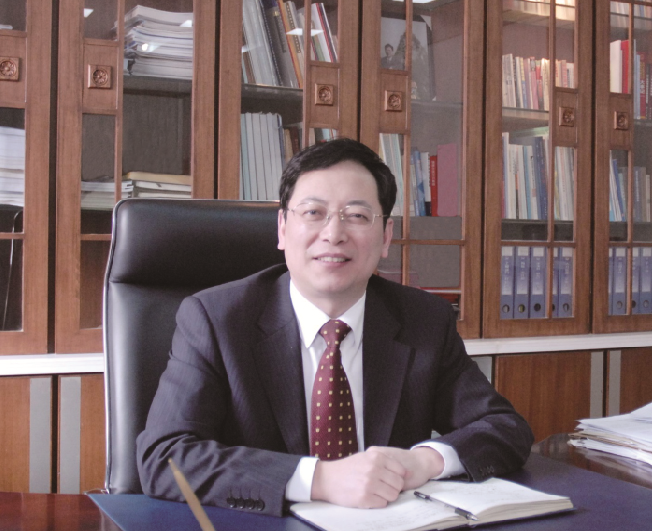 缪昌文,中国工程院院士,教授级高工,大学本科学历,毕业于南京工学院(现东南大学),东南大学教授、博导,现任江苏省建筑科学研究院有限公司董事长、学术带头人。
1982年2月自南京工学院毕业后进入中国水利水电科学研究院工作,主要从事建筑材料的性能分析与研究;1984年7月进入江苏省建筑科学研究所混凝土制品工艺室工作,
主要研究混凝土制品的成型工艺;1986年1月作为访问学者赴丹麦科技大学留学,主要从事水泥混凝土耐久性的研究;1987年2月回江苏省建筑科学研究院工作,
开展混凝土外加剂及高性能混凝土技术的研究与开发,先后担任建材所副所长、所长、建科院副院长、院长;2011年受聘为东南大学材料学院全职教授。
缪昌文,中国工程院院士,教授级高工,大学本科学历,毕业于南京工学院(现东南大学),东南大学教授、博导,现任江苏省建筑科学研究院有限公司董事长、学术带头人。
1982年2月自南京工学院毕业后进入中国水利水电科学研究院工作,主要从事建筑材料的性能分析与研究;1984年7月进入江苏省建筑科学研究所混凝土制品工艺室工作,
主要研究混凝土制品的成型工艺;1986年1月作为访问学者赴丹麦科技大学留学,主要从事水泥混凝土耐久性的研究;1987年2月回江苏省建筑科学研究院工作,
开展混凝土外加剂及高性能混凝土技术的研究与开发,先后担任建材所副所长、所长、建科院副院长、院长;2011年受聘为东南大学材料学院全职教授。缪昌文同志是2008年何梁何利基金科学与技术创新奖获得者,江苏省“333”工程首席科学家,国务院“政府特殊津贴”的专家,建设部特聘专家,被评为江苏省首届留学回国先进个人、 南京市十大科技功臣,获全国杰出专业技术人才奖、江苏省首届创新创业人才奖和江苏省劳动模范称号。
多年来致力于高性能混凝土结构工程材料、高性能混凝土外加剂的研究与开发工作,共承担包括973、国家自然科学基金重点项目和“十一五”科技攻关项目在内的各类科研课题30余项, 先后获得国家科技进步二等奖3项,省、部级科技进步特等奖1项、一等奖3项、二等奖和三等奖共10项。获得授权的国家发明专利19项;出版专著3部,发表学术论文160余篇,其中被SCI、 EI和ISTP收录40余篇次。主持完成的“JK系列混凝土快速修补剂”,可将混凝土路面修复通车时间缩短至4~6小时;率先发明了第一代接枝共聚物混凝土外加剂; 发明了混凝土自浇筑成型起就可分阶段全过程自动测试混凝土收缩变形和早龄期毛细管气压的试验系统,建立了水泥基材料的变形与开裂评价方法。对混凝土微结构形成理论、 混凝土耐久性提升机理等均进行了具有创新性的研究。
Please refer to Changwen Miao .
Zhanwen Han
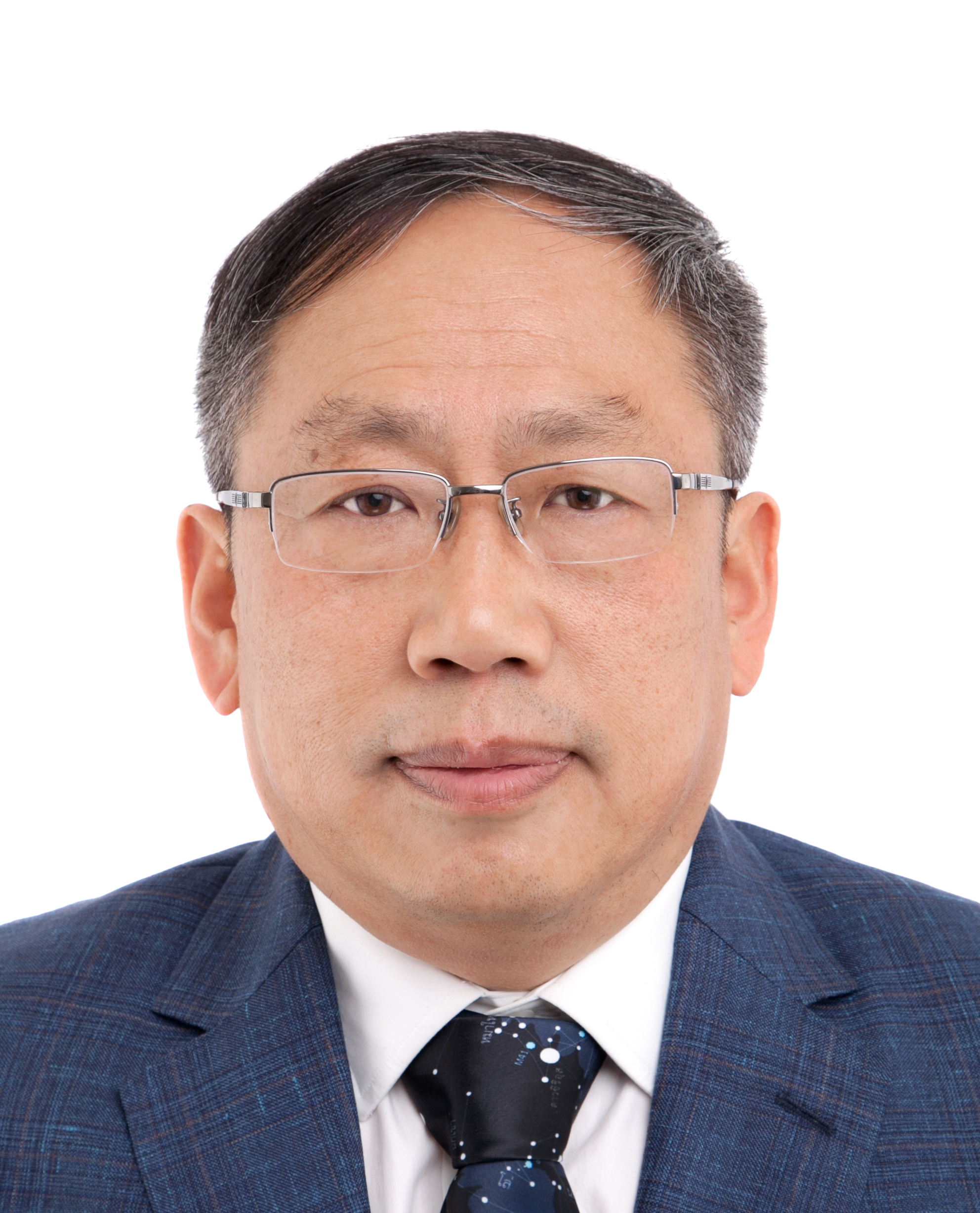
韩占文,1984年毕业于河北大学物理系,1987在中国科学院云南天文台获硕士学位,1995年在英国剑桥大学获博士学位,1998年在中国科学技术大学博士后出站,
同年在中国科学院云南天文台评为研究员,2009年任云南天文台台长,2017年当选为中国科学院院士。
主要从事恒星结构和演化的研究,发展了双星星族合成,建立了多类特殊恒星的形成模型,并将双星星族合成用于星系研究。
现为国家基金委创新群体项目“恒星物理”首席科学家、国际天文联合会(IAU)财务委员会主席、国际天文联合会(IAU)
恒星演化委员会组委、欧洲《天文和天体物理》期刊(A&A)编委。曾获何梁何利基金科学与技术进步奖(天文学奖),国家自然科学奖二等奖等。
Please refer to Zhanwen Han .
Enke Wang
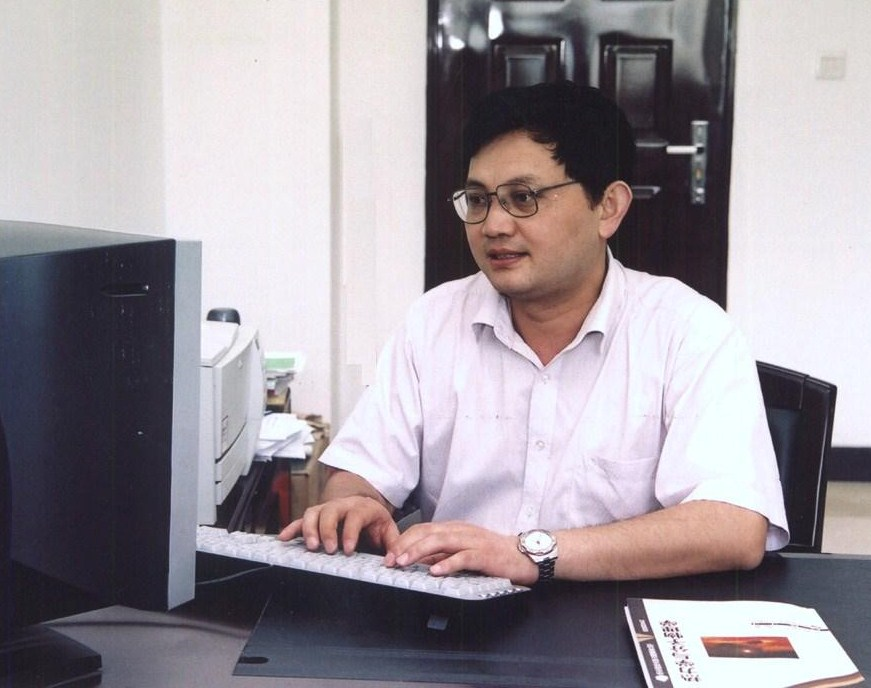
王恩科,现任华南师范大学校长,1997年获德国洪堡研究奖学金在德国Regensburg大学工作,2006年所领导的团队入选教育部“长江学者和创新团队发展计划”, 2007年入选“新世纪百千万人才工程”国家级人选,2008年受聘为教育部“长江学者特聘教授”,2009年获国家基金委杰出青年基金资助。主要从事夸克物质理论、 核环境中的微扰QCD理论、有限温度场论的理论研究。在夸克物质硬探针信号研究方面,发展出有限温度密度的夸克物质系统具有细致平衡效应的喷注能量损失, 引导出强作用介质的喷注层析(Jet Tomography)研究方向,利用喷注淬火探测夸克胶子新物质形态的密度、温度、能量损失大小等早期信息,理论预言得到RHIC和LHC实验证实; 提出的核修正因子已成为高能重离子碰撞物理中一个通用的物理量,并由RHIC的PHENIX和STAR国际实验合作组进行了测量,喷注能量损失的理论预言得到实验验证; 在有限温度场论研究中给出了N点非线形响应格林函数推广的涨落-耗散定理,提出了一种基于梯形图重求和计算热标量场输运系数的非微扰方法。 相关研究成果成为国际同行证实在RHIC和LHC上发现强耦合夸克胶子新物质的一种重要证据的基本文献,在本研究领域级别最高的夸克物质会议的大会报告中被多次介绍, 并得到国际上理论学者的广泛引用。
Please refer to Enke Wang .
Fangwei Wang
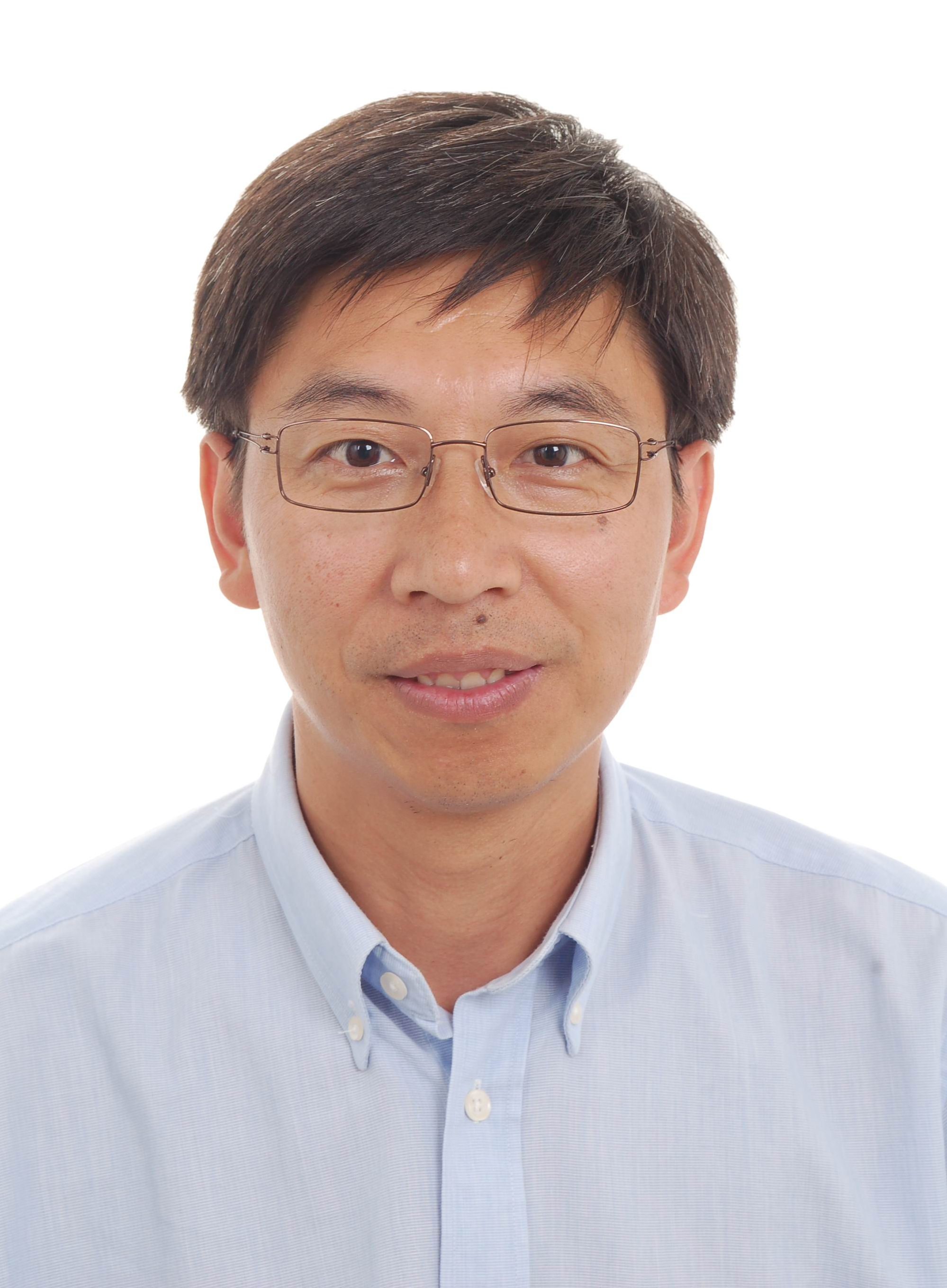 Fangwei Wang has been working as a researcher in the field of magnetism and neutron scattering at Institute of Physics, CAS, after getting his PhD there in 1997,
and became a full professor in 2005. He worked temporarily at HKUST (Hong Kong), LLB/Saclay (France) and ORNL (USA) as a visiting scholar. His research interest
includes neutron scattering instrumentation and application, data analysis and visualization, magneto- calorics/resistance/capacity, magnetism in strongly
correlated oxides and alloys, and clean energy materials, particularly by using neutron scattering technique, and published more than 160 papers in peer reviewed
journals.
Fangwei Wang has been working as a researcher in the field of magnetism and neutron scattering at Institute of Physics, CAS, after getting his PhD there in 1997,
and became a full professor in 2005. He worked temporarily at HKUST (Hong Kong), LLB/Saclay (France) and ORNL (USA) as a visiting scholar. His research interest
includes neutron scattering instrumentation and application, data analysis and visualization, magneto- calorics/resistance/capacity, magnetism in strongly
correlated oxides and alloys, and clean energy materials, particularly by using neutron scattering technique, and published more than 160 papers in peer reviewed
journals. He investigated permanent magnetism and magentocaloric effect in rare-earth transition-metal compounds, magnetoresistance and magnetocapacity in oxides, and macroscopic quantum effect in magnetic molecular. A strong axial anisotropy and a significant enhancement of Curie temperature were found in the permanent magnet candidate, the arc-melting intermetallics R2(Fe,Ga)17Cx. Large magnetic entropy changes were found in RAl2, La(Fe,M)13 (M=Al,Si), and CdCr2S4, (Tb,Gd)Al2 can be an potential magnetic refrigerant in the temperature range of 80–160 K, filling up the gaps required by the eight stage magnetic refrigerator. A strong coupling along the degrees of freedom, lattice, orbital, spin and charge in the bilayer manganite were experimentally verified by multiple neutron scattering techniques. Crystallographic characteristics of Li ion in the battery anode materials Li2MnO3 and LiFePO4 were checked out with neutron diffraction.
Since joining the China Spallation Neutron Source (CSNS) in 2003, he has served as the leader of neutron science division, and conducted the design of CSNS target station and neutron instruments. As schedule, CSNS bursted the first neutron beam in August,2017, three dayone instruments recorded the first neutrons and the genereal purpose powder diffractometer collected its first diffraction pattern in November, 2017. Now CSNS has finished its construction and will be regularly opened to users soon.
He also serve as vice director of China Neutron Scattering Society and the member of council of Chinese Physics Society, of Material Genome Committee, and of Academic Committee of Institute of Physics (CAS), China, also the observer and the representative of CSNS facility in Asia-Oceania Neutron Scattering Association (AONSA).
Please refer to Fangwei Wang .
Keynote speakers
● Turbulence on Cosmic Scales, Long Long Feng, Sun Yat-sen University.
● Multimessenger observations of a flaring blazar coincident with a high-energy neutrino, Pablo M. Saz Parkinson, The University of Hong Kong.
● Dynamics of Circumstellar Planets in Binary System, Man Hoi Lee, University of Hong Kong.
● The Formation of Super-Earths by Tidally Forced Turbulence, Cong Yu, Sun Yat-sen University.
● Microfluidics for artificial photosynthesis of carbohydrates, Xuming Zhang, The Hong Kong Polytechnic University.
● Lead halide perovskite based optoelectronic devices and their applications, Qinghai Song, Harbin Institute of Technology Shenzhen Graduate School.
● Exciton-Phonon Interaction in 2D Materials, Jun Zhang, Institute of Semiconductors, CAS.
● Acoustic spin-redirection geometric phase, Shubo Wang, City University of Hong Kong.
● Chemopallet - A Strategy for Tuning Photoluminescence of Supramolecular Coordination Entities, Dan Li, Jinan University.
● The control of megakaryocyte and platelet formation, Mo Yang, South Medical University.
● Sulfur Chemistry and Linker Cyclization for Stable and Electroactive Metal-Organic Frameworks, Zhengtao Xu, City University of Hong Kong.
● Transport Properties of Thin Polymer Liquid and Solid Films, Ophelia K. C. Tsui, Hong Kong University of Science and Technology.
● Role of interlayer coupling in tuning structural and magnetic properties of 2D few-layers, Wei Ji, Renmin University of China.
● Intrinsic magnetoresistivity in three-dimensional Dirac materials, Shunqing Shen, The University of Hong Kong.
● Chiral SDW and d + id superconductivity in the magic-angle twisted bilayer-graphene, Weiqiang Chen, Southern University of Science and Technology.
● Mechanical Properties of Silkworm Silk and its Applications, Yuan Cheng, Institute of High Performance Computing.
● Metastable Nano Alloys for Hydrogen Storage, Huaiyu Shao, University of Macau.
● Micromechanical Modeling of Strain Hardening Cementitious Composites, Christopher K Leung, Hong Kong University of Technology.
● TBD, Caijun Shi, Hunan University.
● Structural and magnetic properties of cathode materials studied by neutron scattering, Yinguo Xiao, Peking University Shenzhen Graduate School.
● Reversible tuning of ferromagnetism, near band edge emission and resistive switching in Cu-doped ZnO film grown, Francis Chi-Chung Ling, The University of Hong Kong.
● Neutron Spin excitations in superconducting Ba(Fe0.926Co0.074)2As2, Haifeng Li, University of Macau.
● Nuclear Structure and Correlations: From Stable to Unstable Nuclei, Jenny Hiu Ching Lee, The University of Hong Kong.
● Higher order corrections to the Chiral Magnetic Effect, Hui Liu, Jinan University.
● The High-Energy Physics Experiments in the Greater Bay Area, Wei Wang, Sun Yat-Sen University.
● Complexity Science in a Quantum World, Mile Gu, Nanyang Technological University.
● Gibbs partitions, Mittag Leffler functions and waiting time models, Lancelot F. JAMES, Hong Kong University of Sciences and Technology.
● Extended WKB analysis for the generalized Schrodinger equations in the semi-classical regime, Chunxiong Zheng, Tsinghua University.
● Quantum Monte Carlo study of Disordered Spin Systems, Daoxin Yao, Sun Yat-sen University.
● Multi-photon processes on superconducting qubit circuits, Hou Ian, University of Macau.